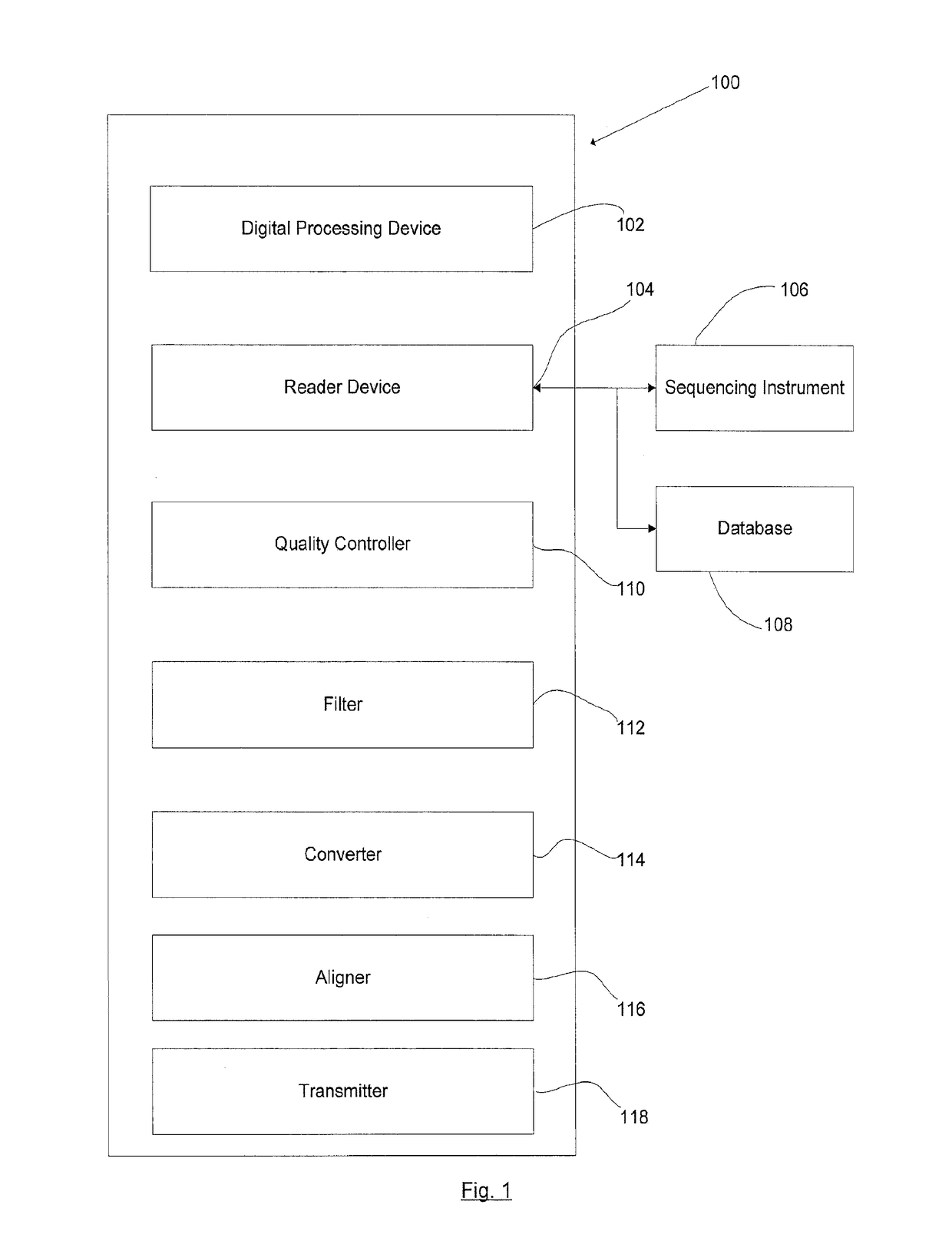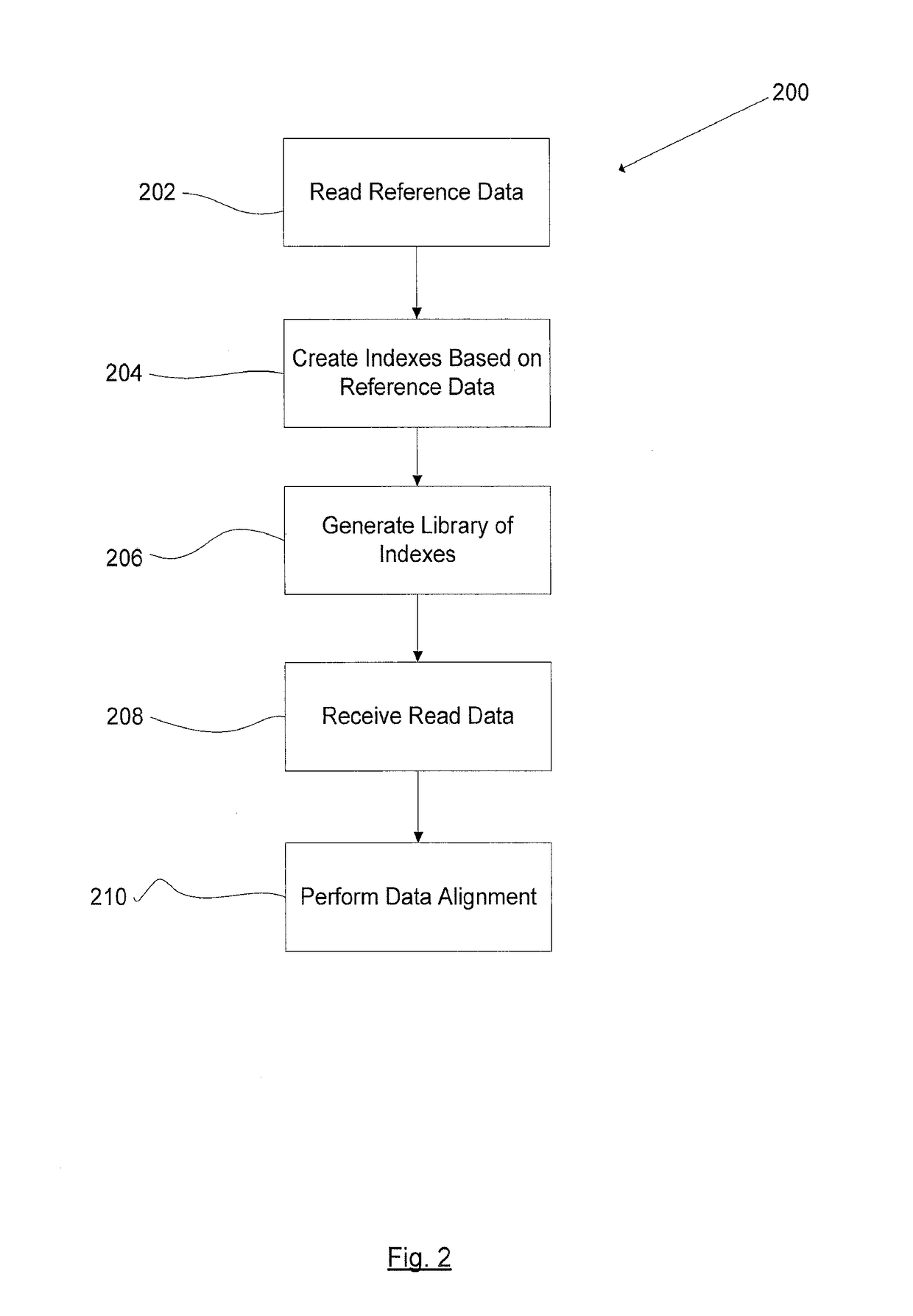Methods and systems for biological sequence alignment
a biological sequence and alignment technology, applied in the field of biological sequence alignment methods and systems, can solve the problems of inefficiency in both the transmission and processing of data, and the inability to accurately predict the sequence of a given organism
- Summary
- Abstract
- Description
- Claims
- Application Information
AI Technical Summary
Benefits of technology
Problems solved by technology
Method used
Image
Examples
Embodiment Construction
[0022]As discussed, it is common when analyzing biological molecules such as DNA, RNA, etc. to use a device commonly known as a sequencer in order to extract biological molecule sequence information from a sample containing the biological molecules. Additionally, protein sequencing devices can determine the amino acid / residue sequences of the proteins using mass spectrometry. Further, other methods of analyzing biological molecules such as sample preparation techniques or software, can, for example, determine DNA modifications, histone positioning, and protein modifications including histone modification (e.g. acetylation, methylation, ubiquitylation, proponylation, etc.). RNA sequencing techniques can also be used to analyze biological molecules. RNA sequencing can measure gene expression by the alignment of the sequencing strings or reads to the reference genome. The larger the overlap of the alignment between the sequencing strings or reads to the reference genome can result in a...
PUM
 Login to View More
Login to View More Abstract
Description
Claims
Application Information
 Login to View More
Login to View More - R&D
- Intellectual Property
- Life Sciences
- Materials
- Tech Scout
- Unparalleled Data Quality
- Higher Quality Content
- 60% Fewer Hallucinations
Browse by: Latest US Patents, China's latest patents, Technical Efficacy Thesaurus, Application Domain, Technology Topic, Popular Technical Reports.
© 2025 PatSnap. All rights reserved.Legal|Privacy policy|Modern Slavery Act Transparency Statement|Sitemap|About US| Contact US: help@patsnap.com



